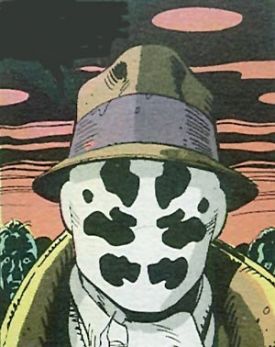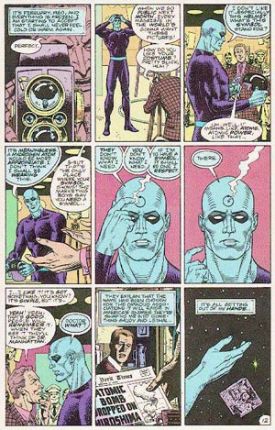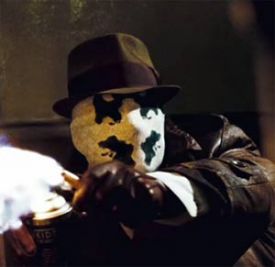Comics /
Spotlight
Watchmen Objections - Storytelling and the Storyboard
By Hervé St-Louis
July 18, 2008 - 08:01
After reading about director Zack Snyder’s direction for The Watchmen movie, I have a few conscious objections, even if the trailer released earlier was just mind grabbing.
How closely Snyder will stick to the original comic book material. Snyder, just like
Sin City Director, Robert Rodriguez has a tendency to stay too close to the comic book and use it as the storyboards for his movie plots. While using as much of the source comic book material is commendable, the comic book is not a movie.
Although both comic books and storyboards are forms of sequential art, they do not try to achieve the same. The comic book does away with the concept of image transition through time and favours spatial changes in each panels. In the storyboard, the spatial qualities are not as important because the main objective of the storyboard is to serve as the basis of a film, a medium that change through time and not through space.
Many directors don’t understand that and in using a comic book as the storyboard of a film, with little nuances and changes, they make the film subservient to the comic book while negating the very storytelling nature that makes the comic book a unique medium for narrative storytelling.
If
The Watchmen film is but an animated copy and paste of the original comic book, then it will not work ultimately as a movie, a piece of art that should stand on its own. In essence this is Moore’s major complaint about adapting his work into film. The comic book is its own thing, and film is its own thing. This obsession with trying to bridge them does nothing to reinforce any of the two media as the main compelling reason to do so is monetary gain and not a respect for art.
The film adaptations of
300 and
Sin City both used almost the exact shot by shot sequences from the comic books. While some comic book readers might see this as respecting the source material, comic books don’t have the same rules when showing specific shots. First, comic books are not limited by format. A single panel can be any size. Second. Because of spatial placement of a comic book panel inside a wider page, one panel containing some information can reinforce the information provided by a neighbouring panel. These options don’t exist in film, where the only image one see, is the one playing.
Frank Miller, just like Gibbons and Moore, used storytelling and innovative shot by shot structures to enhance the narrative they were offering. For example, by relying almost exclusively on a nine panel grid for
The Watchmen, Gibbons used closure and some repetitions to tell the story. Standard film techniques, like action and reaction shots were not as necessary. But in film without consistent action reaction shots, viewers can easily lose track of what is happening.
Some comic book readers confuse storytelling with style. They will argue that the black and white feel of
Sin City or the painted effects of
300 are necessary to capture the essence of the comic book in film format, and that’s why the adaptations must stay as closely related to the source material. The problem with this argument is that the actual style, the rendering of a comic book, has little to do with storytelling. Storytelling is not about crosshatching, black and white effects, or colouring.
Storytelling is about how the basic visual elements tell the story. An effective storyteller in a comic book could be drawing with stick figures, and be the best storyteller, ever. What matters is the composition and how each visual element relates to one another within a panel, and in the overall page composition. For example, Gibbons’ visual style is quite sober and not as stylized as Frank Miller’s. But it takes nothing away from his storytelling abilities. Some other great comic book artists who get storytelling are Keith Giffen and the late Mike Parobeck.
I seriously doubt that Snyder will successfully pull this off, understanding what
The Watchmen did as comic book and what it could do as a movie. Can he successfully use film's vernacular language to elevate
The Watchmen's narrative to the same level as the comic book, or will he simply rely on the plot and copying the exact shot by shot sequence from the source material. I am not against the adaption of
The Watchmen into film. From what I’ve seen, it will probably be a superb film and probably better than most super hero films. However, it will do a disservice to comic books as it only borrows superficially from
The Watchmen comic book.
Erratum
In the previous version of this article, wrote that
Rorschach's mask did not morph.
It seems that the mask of the character Rorschach did indeed change in the comic book and this is not an addition of the film adaptation's team. So I can't used that as an objection to the new Watchmen film.
Last Updated: March 3, 2025 - 20:40


